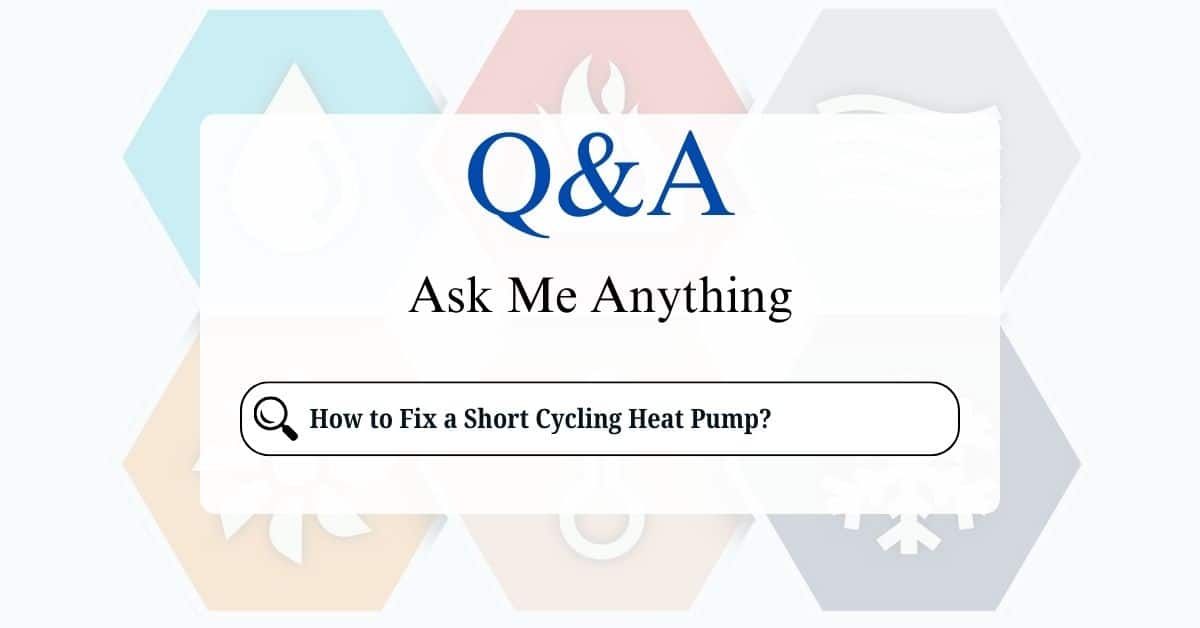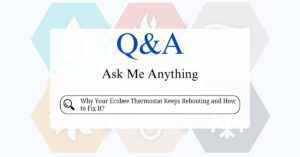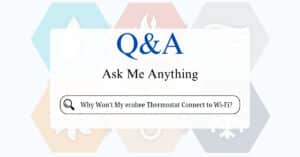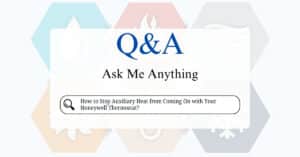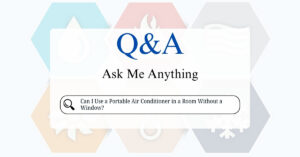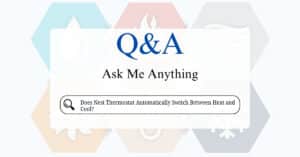Short cycling occurs when a heat pump repeatedly turns on and off in short intervals without completing a full heating or cooling cycle. This issue reduces efficiency and can lead to wear and tear on the system. Here’s a step-by-step guide to diagnosing and fixing a short cycling heat pump.
Step-by-Step Process:
1. Check the Thermostat Settings
- Ensure the thermostat is set to the correct mode (heat, cool, or auto) and at an appropriate temperature.
- Avoid setting the temperature too close to the current room temperature, which can cause rapid cycling.
- Inspect Placement:
- Ensure the thermostat is not near heat sources, drafty windows, or vents, which could cause inaccurate temperature readings.
- Replace the thermostat batteries if applicable and ensure they are functioning correctly.
2. Replace or Clean the Air Filter
- A clogged or dirty air filter restricts airflow, causing the heat pump to overheat or shut down prematurely.
- Locate the air filter in the indoor unit or return vent.
- Remove and inspect the filter. If dirty, clean or replace it according to the manufacturer’s recommendations.
- Check the filter monthly during peak usage seasons to prevent future issues.
3. Inspect the Refrigerant Levels
- Low refrigerant can cause the heat pump to short cycle, as it struggles to maintain the desired temperature.
- Signs of low refrigerant include frost on the outdoor coil or a hissing sound near the refrigerant lines.
Do not attempt to refill refrigerant yourself, as it requires specialized tools and certifications. Contact an HVAC technician to check and recharge the system if necessary.
4. Clean the Outdoor Unit
- Debris, such as leaves, dirt, or snow, can block the condenser coil, causing the system to overheat and shut off prematurely.
- Turn off the heat pump and gently rinse the outdoor unit using a garden hose.
- Remove any debris around the unit and ensure at least 2 feet of clearance for proper airflow.
- Inspect the condenser fins for damage and straighten them with a fin comb if necessary.
5. Test the Capacitor and Compressor
- A failing capacitor or compressor can cause short cycling, as these components are essential for starting and running the system.
- Use a multimeter to test the capacitor for proper voltage (if you are trained to do so safely).
- If the compressor is overheating, you may notice the system shutting off before completing a cycle. Contact a professional HVAC technician for diagnosis and repair.
6. Inspect the Defrost Cycle
- In heating mode, heat pumps occasionally enter a defrost cycle to melt frost on the outdoor coil. If the defrost cycle is malfunctioning, it can lead to short cycling.
- Monitor the heat pump to see if it switches to defrost mode frequently or fails to complete the cycle.
- An HVAC professional may need to replace a faulty defrost control board or sensor.
7. Check for Electrical Issues
- Loose or corroded electrical connections can interrupt power to the heat pump, causing it to turn off unexpectedly.
- Turn off the power and inspect the connections inside the thermostat, control board, and outdoor unit.
- Tighten any loose wires and replace corroded connections.
8. Examine the Heat Pump Size
- If the heat pump is too large for your home, it may cool or heat the space too quickly, causing it to shut off prematurely.
- This design issue requires consultation with an HVAC professional to resize or replace the unit.
9. Reset the System
- Sometimes, a system reset can resolve minor glitches:
- Turn off the thermostat and heat pump.
- Shut off power to the system at the breaker panel.
- Wait 5 minutes, restore power, and turn the system back on.
Why Short Cycling Happens?
- Thermostat Issues: Faulty placement or calibration of the thermostat.
- Airflow Restrictions: Dirty filters or blocked vents.
- Refrigerant Problems: Low refrigerant levels or leaks.
- Mechanical Failures: Malfunctioning compressors, capacitors, or defrost systems.
- System Oversizing: An improperly sized heat pump for the space.
What are the Signs of Heat Pump Short Cycling?
- The heat pump turns on and off frequently (every 5–10 minutes).
- Uneven heating or cooling in your home.
- Higher energy bills are due to increased start-up energy demands.
- Unusual noises from the system.
When to Call a Professional?
- You’ve checked the thermostat, air filter, and outdoor unit, but the problem persists.
- There are signs of refrigerant leaks or electrical issues.
- The compressor or defrost system shows signs of malfunction.
If your heat pump turns on and off frequently, it might be a sign of a problem. This not only wastes energy but can also lead to higher bills. A heat pump usually works properly when running for 10 to 20 minutes before shutting off; ideally, it shouldn’t cycle on and off more than 2 to 3 times an hour.
Following this guide, you can address many common causes of short cycling in a heat pump. Regular maintenance and timely repairs prevent this issue and ensure efficient operation. If troubleshooting doesn’t resolve the problem, consult a licensed HVAC technician for professional assistance.
